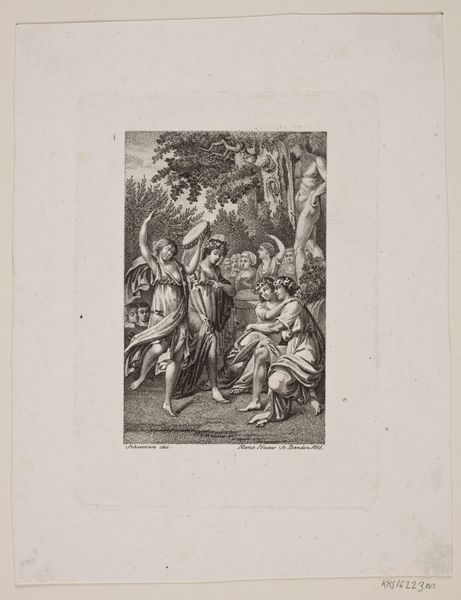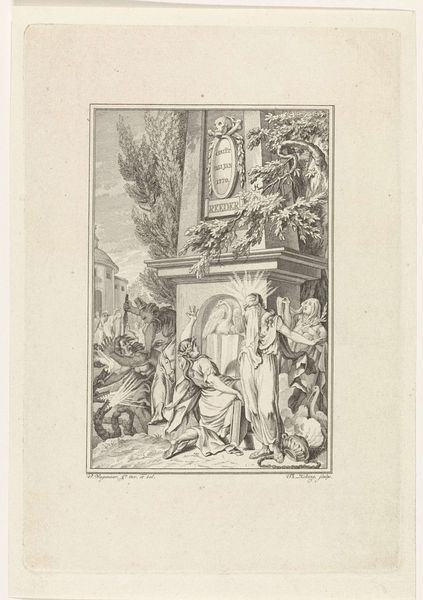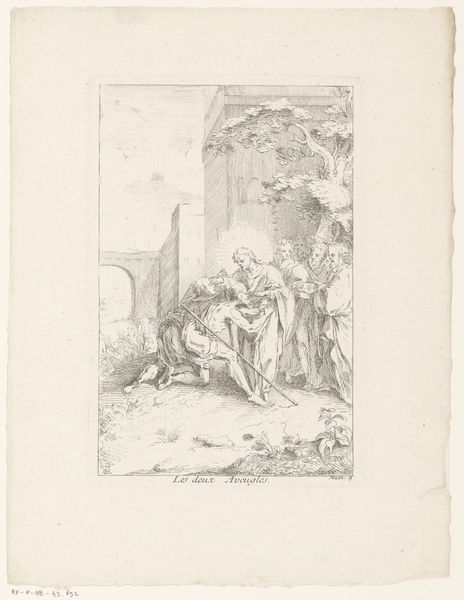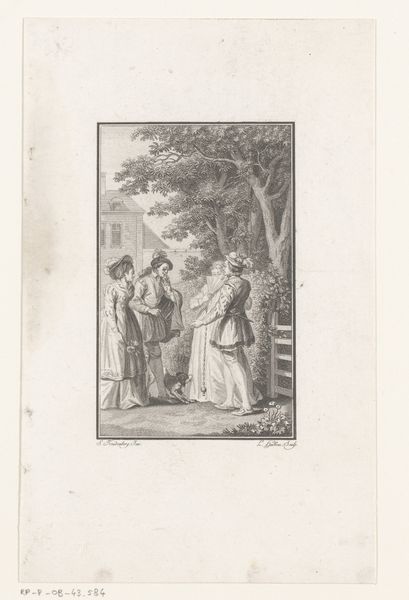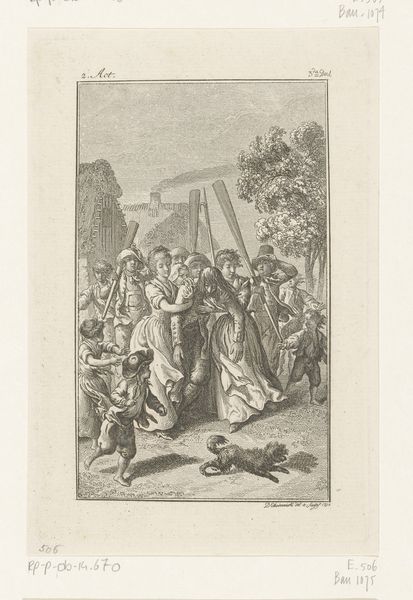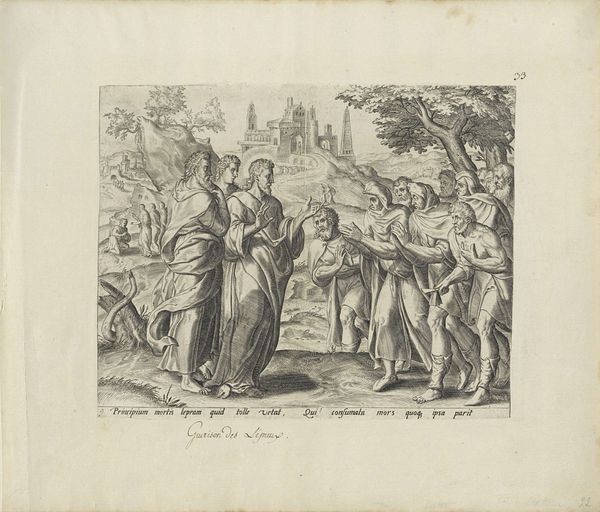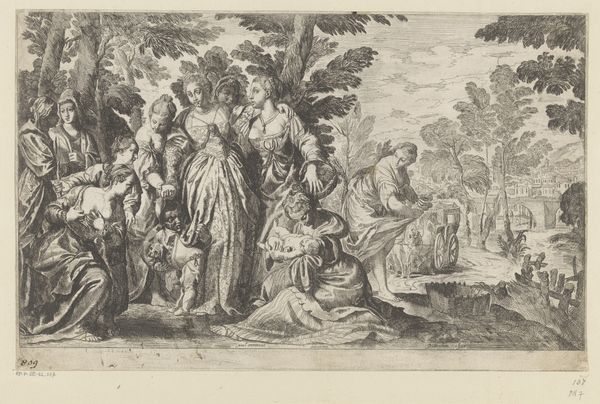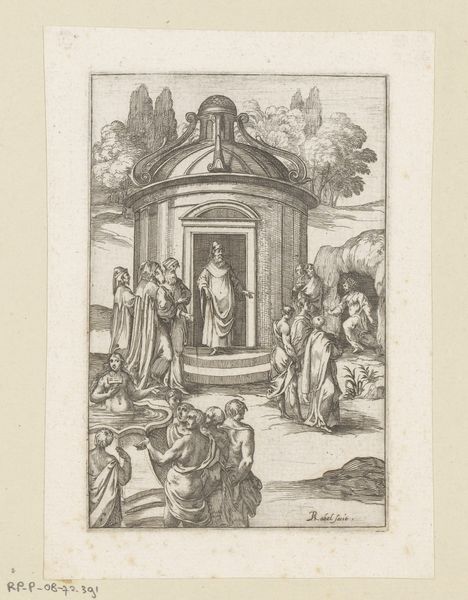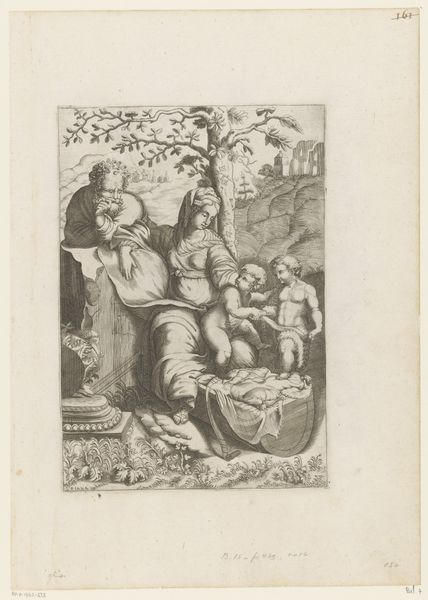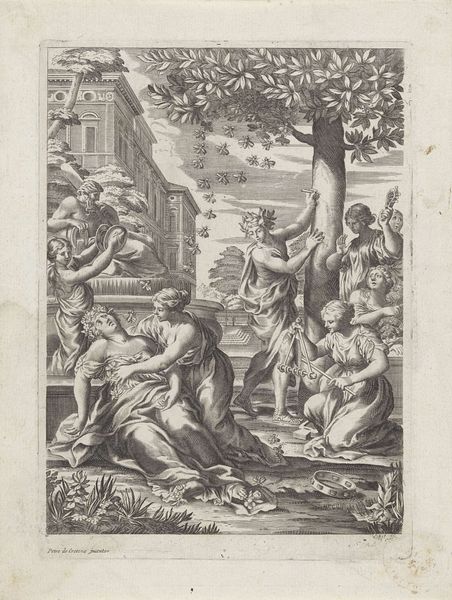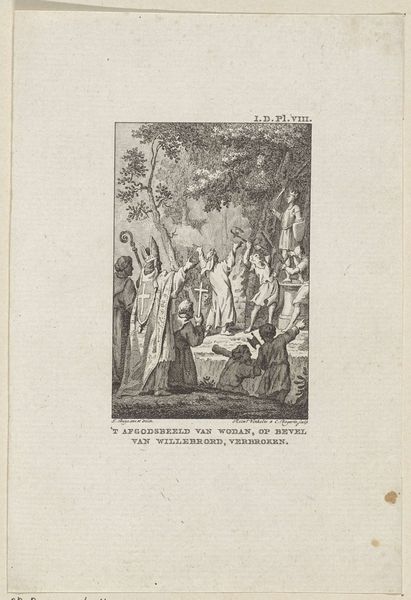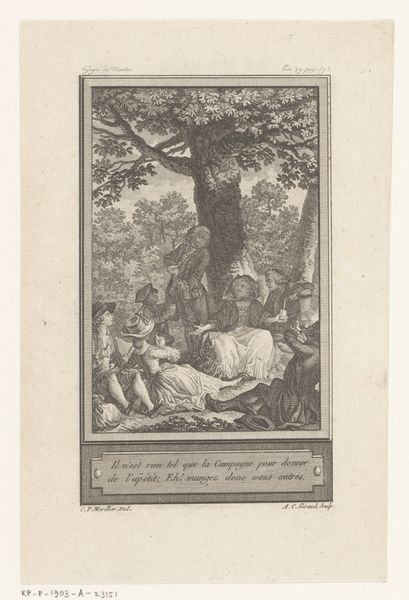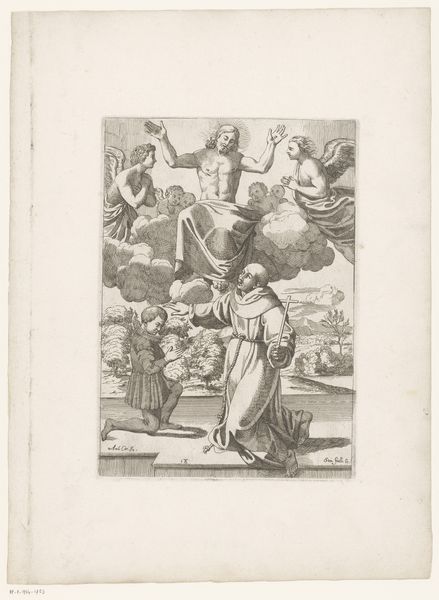
drawing, print, ink, engraving
#
drawing
#
baroque
# print
#
landscape
#
figuration
#
ink
#
history-painting
#
engraving
Dimensions: height 248 mm, width 155 mm
Copyright: Rijks Museum: Open Domain
Curator: Welcome. We are looking at "Rebekka en Eliëzer bij de put", an engraving made between 1683 and 1733, by Bernard Picart, part of the Rijksmuseum collection. Editor: Immediately, the crisp, almost stark lines give the scene a feel of industriousness. It depicts figures clustered around a well, rendered with an impressive level of detail. Curator: This depicts the biblical story of Rebekah meeting Eliezer. We can see Eliezer, Abraham's servant, seeking a wife for Isaac at a well, where he asks for water. Rebekah not only offers him water but also waters his camels. This act of kindness identifies her as the chosen one. Editor: Ah, notice the materiality: the etching captures a subtle roughness. I am especially drawn to how Picart manages to communicate texture; see the depiction of sheep's wool, almost coarse. And the well itself – I am curious about the source of the water and its transport! Curator: The well is the central motif, but Rebekah, presenting the jug to Eliezer, is obviously the focal point. It symbolizes not just refreshment but also hospitality, fate, and the divine plan unfolding. The surrounding figures bear witness to this divinely appointed encounter, which holds immense importance in Jewish and Christian lore. Editor: That jug, simple as it may seem, signifies the act of labor itself, and communal living! It brings to mind ideas of sharing, the collective, and the vital work needed for survival in the society this image represents. The production and access to resources are visually so accessible here. Curator: It is true. In iconography, water itself can be a multifaceted symbol—purity, life, cleansing. It also heralds marriage and lineage as a fundamental act of continuing one’s heritage. Editor: These are critical points. Looking more closely at the technique used in the etching, one has to consider its impact on wider culture too: multiple impressions allow for disseminating imagery throughout society—effectively widening that heritage you mention. Curator: This engraving acts as a vessel itself, echoing the symbolic container Rebekah proffers. A potent reminder of faith. Editor: Indeed! This image provides a compelling meditation on labor and its relationship to destiny. It goes well beyond its face value.
Comments
No comments
Be the first to comment and join the conversation on the ultimate creative platform.
